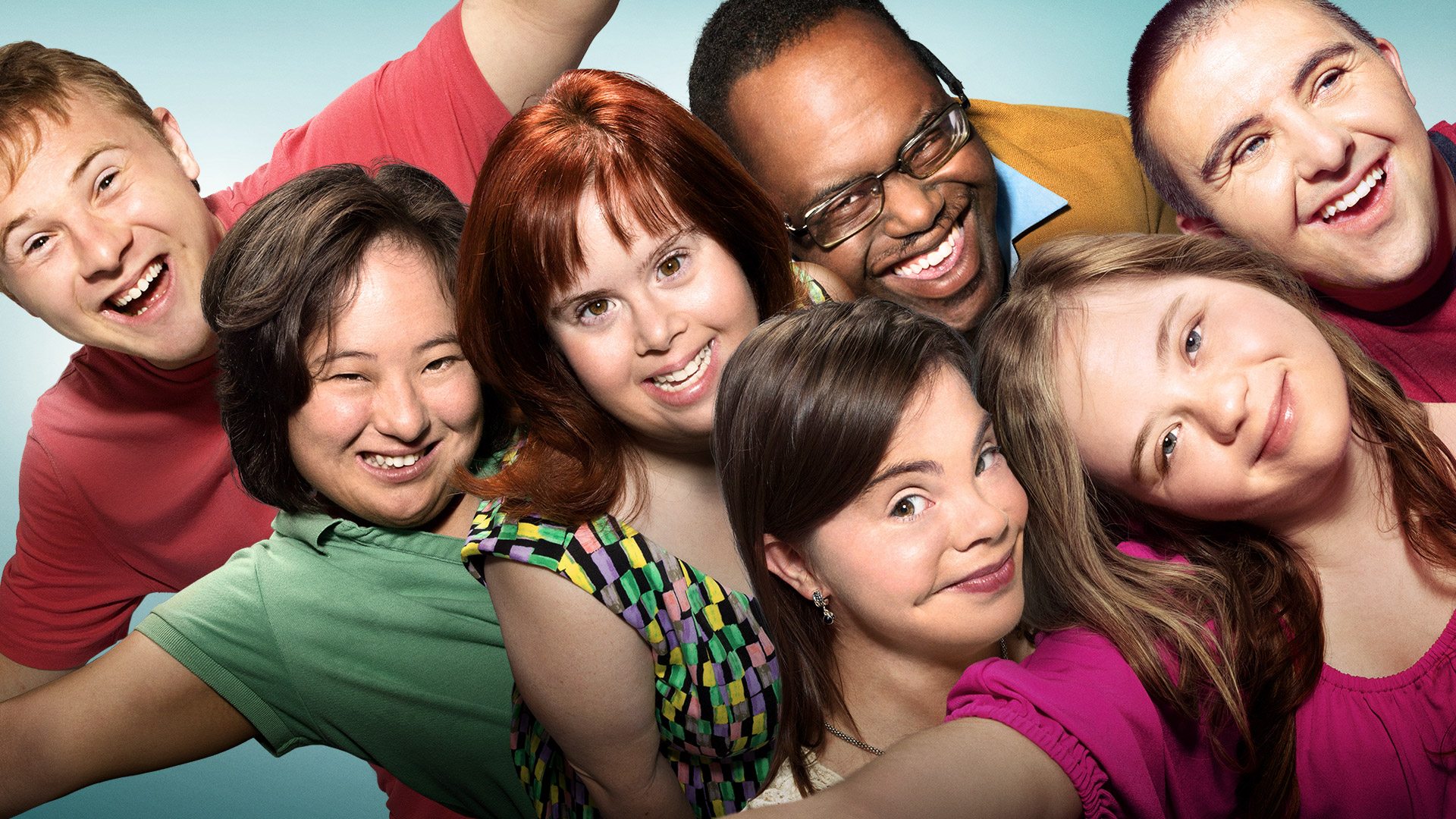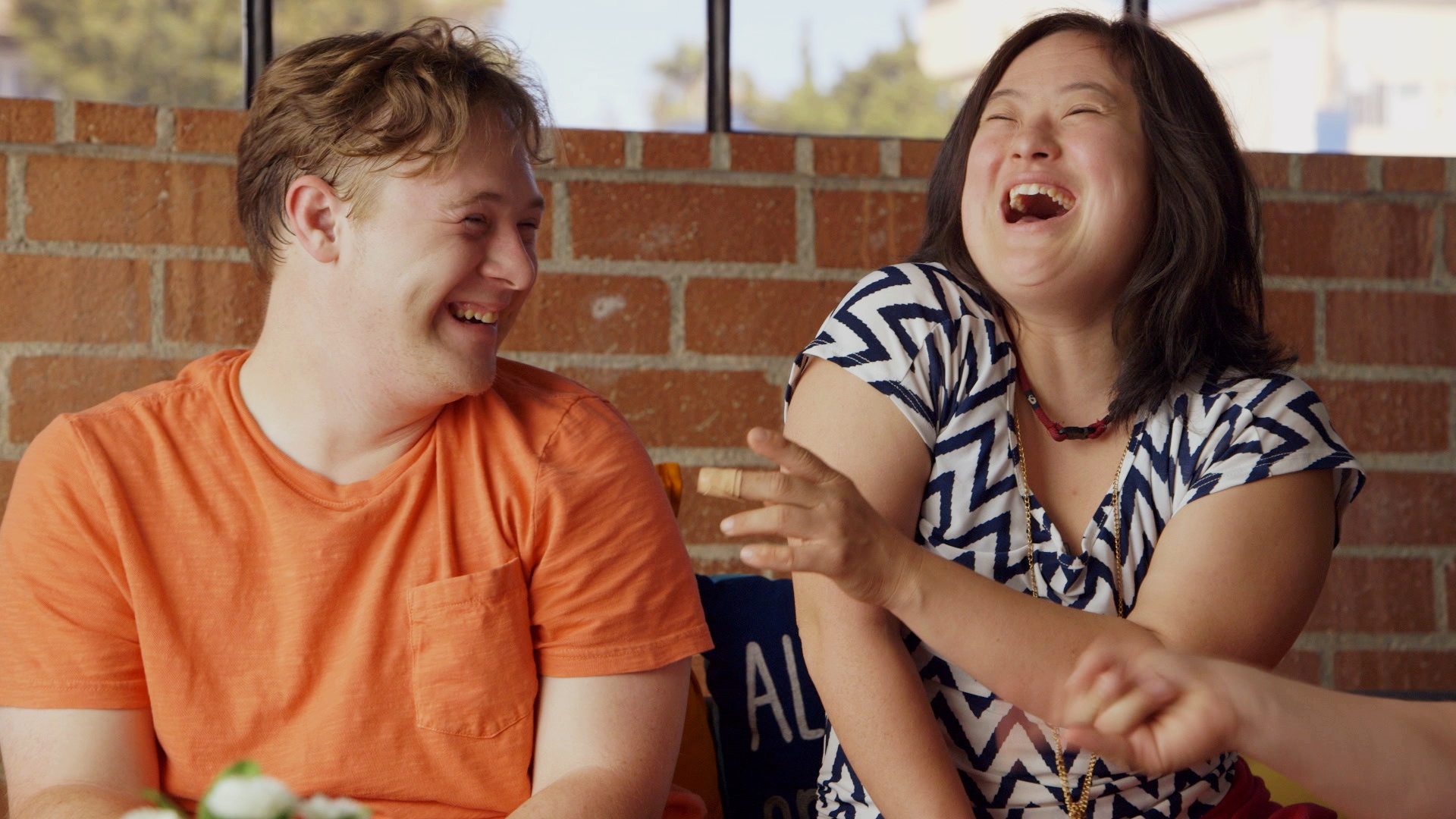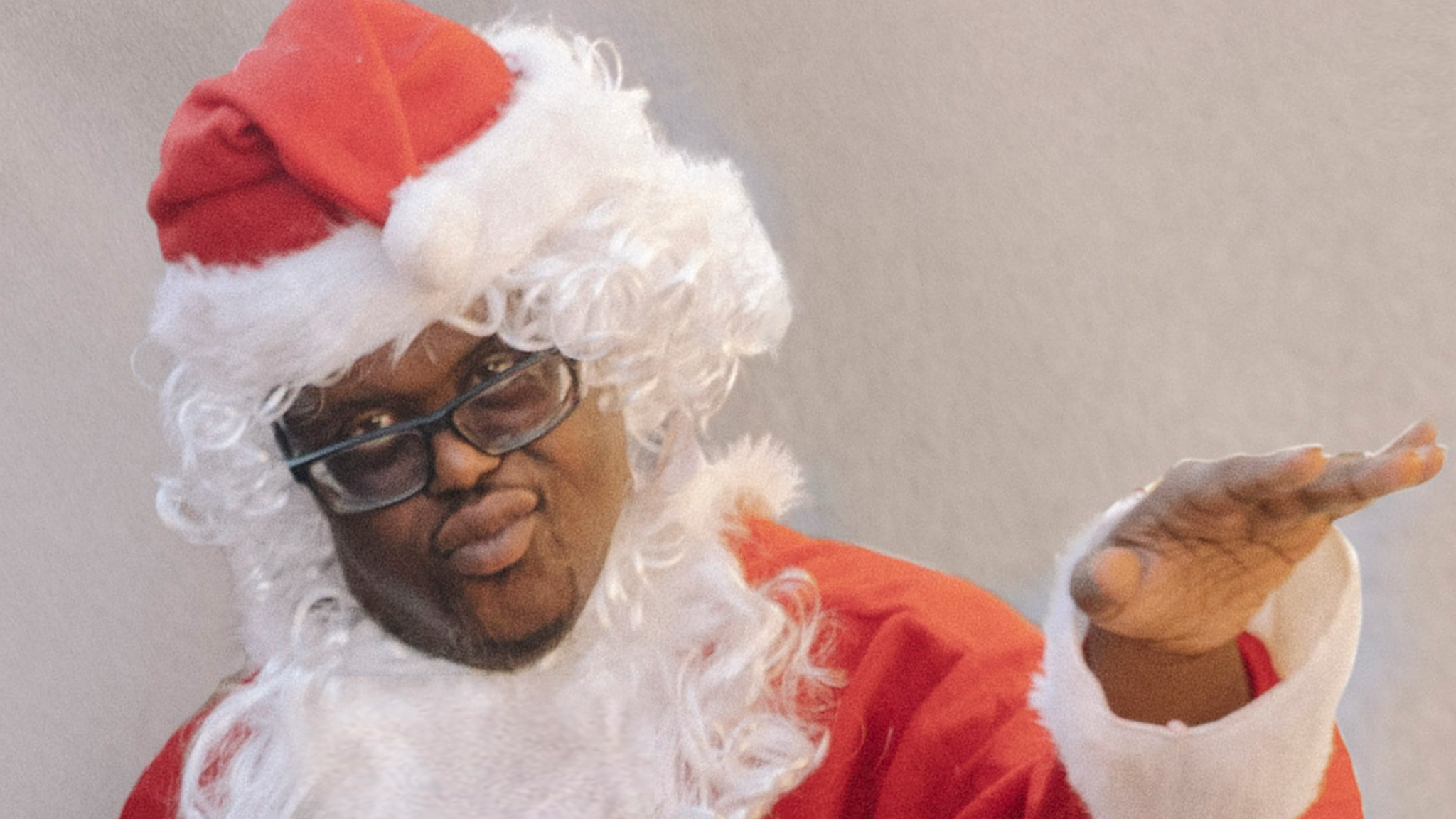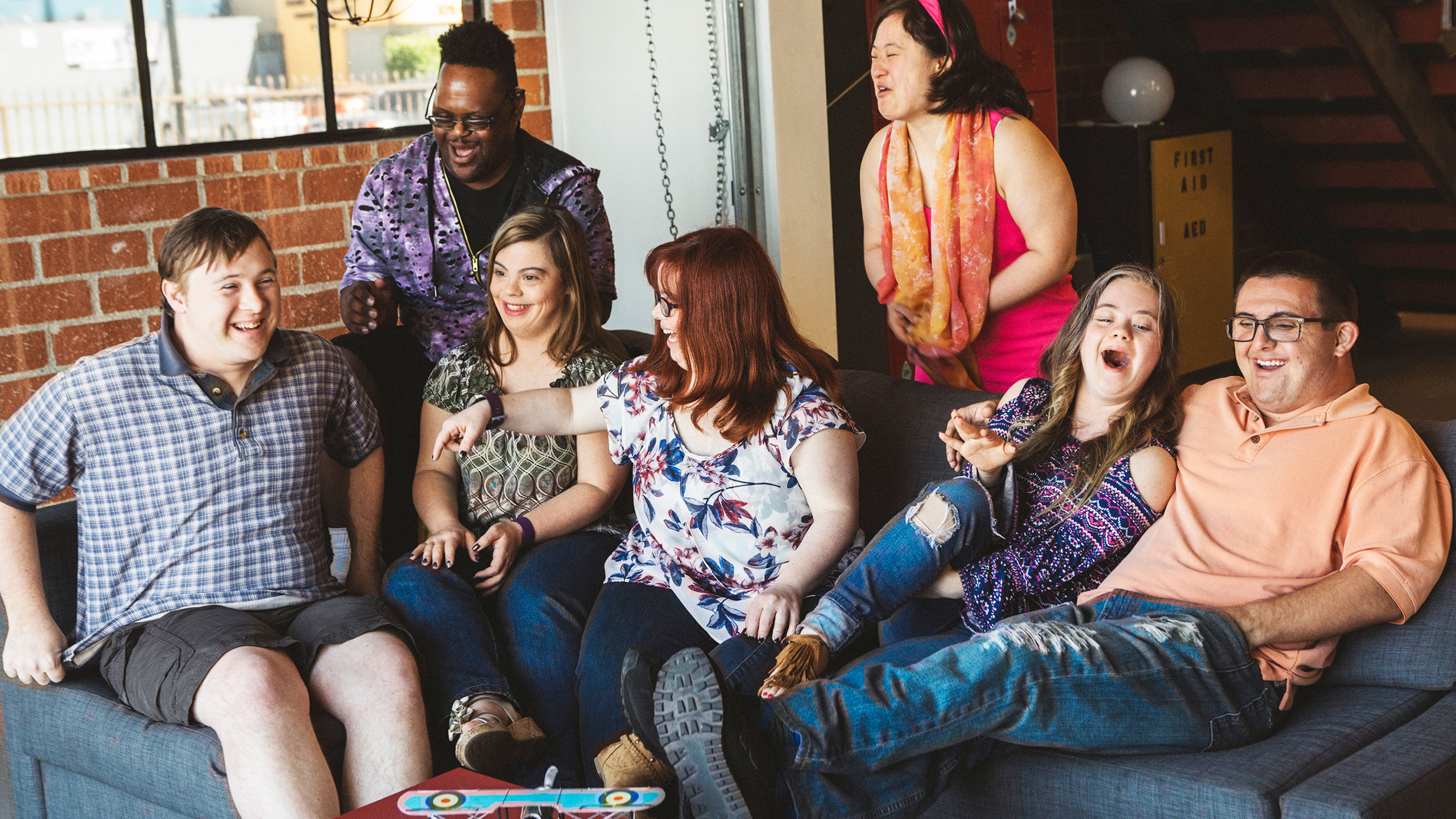When Born This Way premiered in 2015, people with disabilities were barely visible on the TV landscape. Just .9 percent of regular characters on scripted prime-time broadcast shows were depicted as living with disabilities, a report by media monitoring organization GLAAD found.
That number was strikingly low, considering about one in five Americans lives with a disability
But the creators of Born This Way knew there were powerful stories to be told, stories that could make a difference.
"Our plan was to present a really entertaining story. To take you into a world you might not know," said Executive Producer Jonathan Murray. "And if we did that well, then yes, people's perceptions would change."
Putting People on TV Who Normally Aren't Seen
Born This Way follows the lives of seven young adults with Down syndrome as they forge independent lives, enter relationships and contend with stereotypes. The show was conceived by the same company, Bunim/Murray Productions, that created The Real World, which aired on MTV from 1992-2017.
Executive Producer Jonathan Murray explains that while one show focused on young adults with various backgrounds and the other portrayed the lives of those with Down syndrome and their families, both programs share the same "DNA." Each show, Murray says, "was about putting people on TV who normally weren’t seen."
In fact, the initial pilot for a series about young adults with Down syndrome followed the Real World model even more closely. It took the young people and placed them into two homes, one for the women and one for the men.
A&E passed on the show at the time, but it only took a few years before they reconsidered. And during that period, Murray and others had time to develop the show's design.
"What was wonderful," Murray says, "is we had all had a chance to really think about that subject, and a lot had been stirring in our brains and we realized that the best way to tell the story was much more documentary-like. To focus on a community where people already knew each other, and to include the story of the parents, too."
Authenticity Is Power
From the outset, the show's producers knew it could not work without the trust of its stars and their families. So the first goal was earning the families' confidence.
"There weren't, at the time, many shows that dealt with people with disabilities, people with Down syndrome, and so, understandably, the families were hesitant to share their stories out of fear that possibly their stories might be told in a negative light," says Megan Sleeper, SVP of Casting at Bunim/Murray.
And it wasn't just a case of protective parents. Murray remembers other family members having reservations, as well. "Some of the siblings were sort of holding back. They weren't quite sure whether this is the right thing for the family, and they had other ideas about what reality TV might be."
After the first episode aired, Murray saw the families express relief. At that point, he says, they realized, "'Okay, we are in safe hands. This network and this production company and this crew really are taking care of us and presenting a powerful and important story.'"
Winning the families' trust meant everything, says Dr. Laura Korkoian, executive producer and showrunner. "This show worked because the families trusted us, and the cast," she says. "The minute you work at a reality show where you don't have the cast trusting you, you have major problems. Your storytelling isn't truthful and authentic. And in that authenticity is power, and that's why I think we created four very powerful seasons and episodes because they trusted us, the parents trusted us, and we worked very hard to make sure we always honored that trust."
Show Becomes a Support Network
Once the families, creators and crew reached a point of mutual trust and understanding, the show took on a life—and network—of its own. The parents realized that they weren’t alone, and a support system of families and friends began to grow.
"These seven families have created a very close bond," Korkoian says. "They're there as support and backup. So everyone benefited from participating in the show."
Apart from the cast, staff members also drew inspiration from working on the show. Korkoian remembers, "Usually on shows there was turnover with the crew or in the post team. And on this show, we had people fighting to get on."
No one wanted to leave, Korkoian explains, because it was a project that ultimately, "changed all of us internally, and the way in which we see disability, and specifically Down syndrome, today."
Korkoian recalls a talent manager on the latest season who had expressed interest in working on the show from day one. She has a sibling with Down syndrome, Korkoian explains, adding, "When we brought her on this season, she said it helped her have new conversations with her parents about how to raise her sister."
Then Born This Way's families began to hear from viewers. For those who had long weathered judgement from others, the positive feedback was a welcomed turn of events. "People are coming up to them and saying, 'Oh my God, you are the best. You are just such great parents,'" says Murray. "Or other people who have children with Down syndrome are coming up to say, 'You're representing our community so well.'"
Murray recalls one viewer even revealed how watching the show changed her outlook on her own future. According to Murray, the woman told them, "I was six months pregnant, I was told I was going to have a child with Down syndrome. And seeing your family made me realize it's not the dark and gloomy picture that the doctors were painting for me, that there actually can be joy. And that my child can contribute to his family and to his community."
A Powerful Platform
Throughout its four years of programming, Born This Way became a platform for addressing a range of issues that people with Down syndrome and their parents confront throughout their lives. One is the conflicted reaction parents often have upon learning they are expecting a child with the condition.
More than 400,000 people currently live with Down syndrome in the United States today, according to the National Institutes of Health, and the National Down Syndrome Society estimates that about 6,000 babies are born with Down syndrome in the United States every year. In the show's first-ever episode, John Tucker talks with his friends about how grateful he is that his mother decided to see her pregnancy through. Murray says that episode was particularly memorable.
"He is so articulate and so powerful in what he says about being thankful that his mother went ahead with the pregnancy," Murray recalls. "I think sometimes people think that someone with Down syndrome or an intellectual disability doesn't have... there's nothing deep, it's all just sort of superficial. And it was very clear to me—he was making it very clear to me—that these folks have very deep thoughts."
Another common issue for people with Down syndrome is sensitivity to loud noises. Born This Way's Rachel Osterbach confronted her own sound sensitivity as she lived out her so-called "Year of Yes." As Korkoian remembers, Rachel decided to attend a loud, crowded concert by her favorite performer, Adam Lambert.
"We were told by the venue that we were to shoot just her in her seat. And all of a sudden, she started to move, and we were like, oh God, what is she doing?" Korkoian recalls. "I just followed Rachel's lead and trusted it, and she walked right to the front. Security let her into that little front area and Adam came down. Rachel in that moment taught me, Laura, just go for it, you know? Just go for it. Don't worry, just trust the process. And we got something beautiful."
Just three years later, in the final season, Rachel decided to continue to go for it—and run for president. She started small, and locally, but she’s aiming high. While Rachel may not be a major candidate for the Oval Office in 2020, her campaign has served to advocate for increased inclusion for people with disabilities.
Branching Out
As she plans her political future, Rachel is also exploring the newfound sense of confidence she’s gained from the show.
Rachel counts "Home Alone," the episode in which she and Megan Bomgaars moved in together, as one of her favorite episodes. She says, "Besides having a great time living with my close friend Megan away from our parents' houses, it made me realize that I could do it—that I could live on my own! ... I will actually be moving out on my own in the next few months! I don't know if I would have had the confidence to do this if I had not lived with Megan. It really changed my life!"
Much of the cast is testing out their independence. Elena Ashmore has also left home, and is now living happily in a group home, giving her mother the opportunity to move back to Japan. And Megan has struck out on her own and is attending college in Colorado. Ever the entrepreneur, her business empire, which she calls her "Megpire," continues to flourish.
On top of the huge leaps the cast have made as individuals, one event was particularly meaningful for the show's families—the marriage of two of the show's stars, Cristina Sanz and Angel Callahan. Fellow cast member, Megan, picked that event as her favorite episode.
"Watching Cristina and Angel get married was one of the happiest experiences of our Born This Way family," Megan says. "Feeling the love and sharing such a special moment forever changed so many of societies views of expectations for people with disabilities. Of course, we can find love and have relationships just like everyone else."
Cristina's parents, Bea and Mariano, say their daughter's marriage has also been momentous for their own lives. "It is allowing us to experience something we never thought would happen—an empty nest!" they wrote in an email. "Cristina's independence is also ours. The peace of mind of not having Cristina be dependent on us on a daily basis will allow us to enjoy ourselves and each other."
Pretty Much Invisible on Primetime
As the show's cast experienced life changes on the show, the fact that audiences were able to watch them live through these changes carries an impact of its own. Research shows that visibility is vital to shifting opinions, educating audiences and creating awareness. According to the recent Disability Inclusion in Movies and Television market report, as released by the Ruderman Family Foundation, audiences aren't just ready to see characters with disabilities played by actors with disabilities, they actually prefer it.
The study found that 55 percent of participants age 16 and older would prefer authentic portrayals of characters with disabilities. In addition, half of respondents say they are more likely to watch a show that features a disabled actor playing a character with the same disability as opposed to a non-disabled actor in the same role. Half of viewers also say they are more likely to sign up for content distributors committed to more accurate portrayals of these characters.
As Born This Way ends this year, television is in a better place than it was in 2015. The same GLADD annual report finds a record high 3.1 percent of regular characters on scripted prime-time broadcast shows depict people living with disabilities.
But Murray says that inclusion is about more than just having authentic portrayals of people with disabilities. "That's talking about why can't that lawyer have a disability? Why can't that doctor? Why can't that accountant? Or why can't that father or that mother have a disability?" Murray says. "Again, it's just such wonderful progress because for far too long people with disabilities were pretty much invisible on primetime television."
Spend one last holiday with the Born This Way family. Watch the series finale Christmas special, no sign in required.
Relive your favorite Born This Way moments. Every episode is now available to watch, no sign in required.
The cast has big plans for the future. See what's in store for them in the exclusive six-part digital series Moving Forward.





